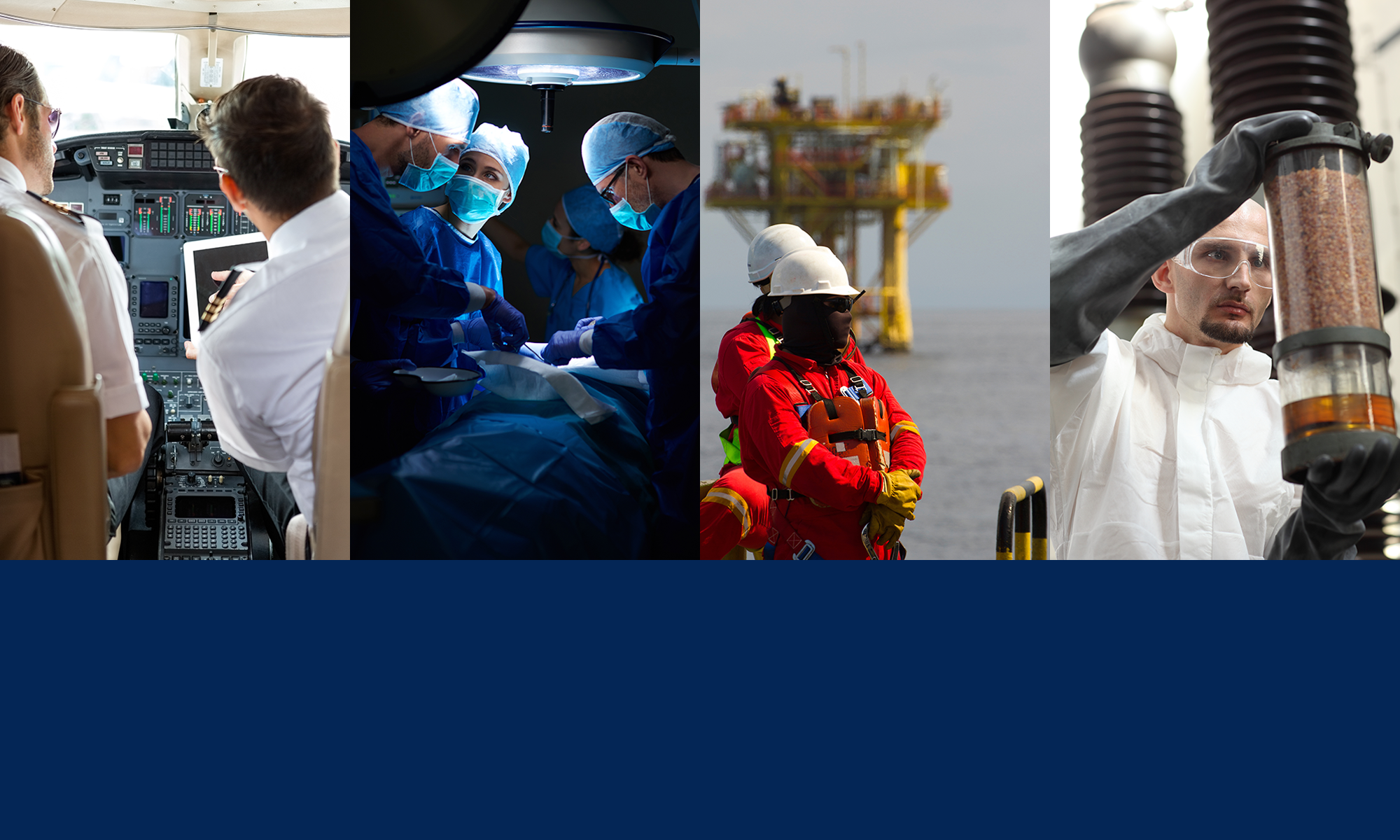- Provides Threat and Error Management training
- Implements Threat and Error Management within your operations
- Supports you in setting up a Normal/Line Operations Safety Audit
- Supplies Evidence-Based Training
Aviation
Threat and Error Management: Sixth generation CRM?
In the aftermath of accidents and incidents, inevitable questions arise: Why did the crew NOT see the obvious? Why did a professionally trained team commit the error?
A traditional perspective has been to analyse the incident/accident from outside and with hindsight.
The other perspective is to view the event from inside and in context, accepting that operational threats are inherent to, and manifest themselves within, operational environments.
The T.E.M. perspective proposes that threats and errors are pervasive in the operational environment within which flight crews operate. Threats are factors that originate outside the influence of the flight crew but must be managed by them.
Flight crews must manage an ever-present ‘rain’ of threats and errors, intrinsic to flight operations, to achieve the safety and efficiency goals of commercial air transportation. Sometimes these goals pose an apparent conflict. Nevertheless, safety and efficiency should not be presented as an x/y axis, but as a continuum line. While efficiency overarches the raison d’être of all commercial endeavors, safety goals reinforce the survival of commerce. The articulation of this concept to flight crews forms the bedrock of T.E.M. training.
And CRM is the training tool to achieve the objective of T.E.M..
Medicine
Human Factors in medicine: Lessons from aviation
Aviation safety has evolved over more than a century and has achieved remarkable results. Applying some of the lessons learned may help healthcare (especially surgery and anesthesia) safer.
Although many of the ingredients for safe operation are frequently already present in our hospitals, and some individual clinical areas and departments achieve high levels of reliability and safety, we firmly believe that we cannot expect improvements in Human Factors training and awareness to be fully effective in the healthcare setting without the parallel development of a simple and strong safety system across organizations.
CRM training has been adopted by a number of other professions including the offshore oil industry and the nuclear power industry amongst others. Accident analysis from many industries reveals that Human Factors appear to dominate the risks inherent in complex installations.
In the training process, we may nevertheless find that the safe hospital turns out somewhat differently to the safe airline.
For further details of the evolution of CRM training to include Threat and Error Management (T.E.M.) training in aviation, and de facto in medicine, please see our Aviation section.
Offshore
Human Factors in offshore oil industry: An application from aviation CRM
The project to develop Crew Resource Management (CRM) training for the offshore oil industry extends from previous Human Factors research with the offshore oil industry carried out in 1997 (Mearns, Flin, Fleming and Gordon).
They recommended that ‘training programmes are developed for teaching Human Factors skills…Aviation CRM provides a framework for such training because it essentially teaches skills as leadership, team-working, decision making, assertiveness and communication with the aim of reducing human error’.
The aviation industry recognized the significance of human error in accidents almost 40 years ago, and has been instrumental in the development of effective training programmes, designed to reduce error and increase the effectiveness of flight crews, known as Crew Resource Management.
Further evidence of the success of CRM comes from the Danish shipping company Maersk. They introduced Crew Resource Management for their mariners in 1994. Incidents and accidents have decreased by a third after the introduction of CRM training. All insurance premiums were lowered two years later.
CRM training has been adopted by a number of other professions including surgeons, anesthetists and the nuclear power industry amongst others. Accident analysis from many industries reveals that Human Factors appear to dominate the risks inherent in complex installations. Studies offshore have revealed similar findings: human errors are a frequent cause of accidents.
For further details of the evolution of CRM training to include Threat and Error Management (T.E.M.) training in aviation, and de facto in offshore oil industry, please see our Aviation section.


